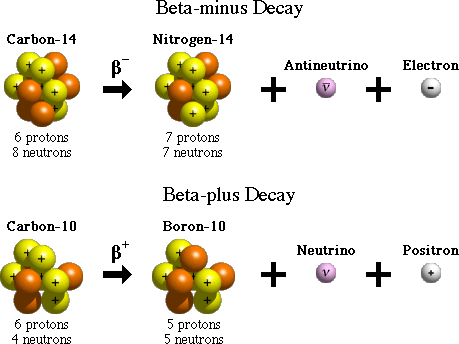Question #0fd26
1 Answer
Actually, the atomic number increases by one in a beta decay, also known as a

Essentially, a neutron, which is a neutral particle, is converted into a proton, which is a positively charged particle, by emission of an electron, which is a negatively charged particle.
As a result, the atomic number will increase by one, since the nucleus now has one proton than it had befor the beta decay. The number of neutrons will decrease by one, which implies that the mass number, i.e. the number of protons and neutrons in the nucleus, will remain unchanged.
The atomic number would decrease by one in a
Similar to a

